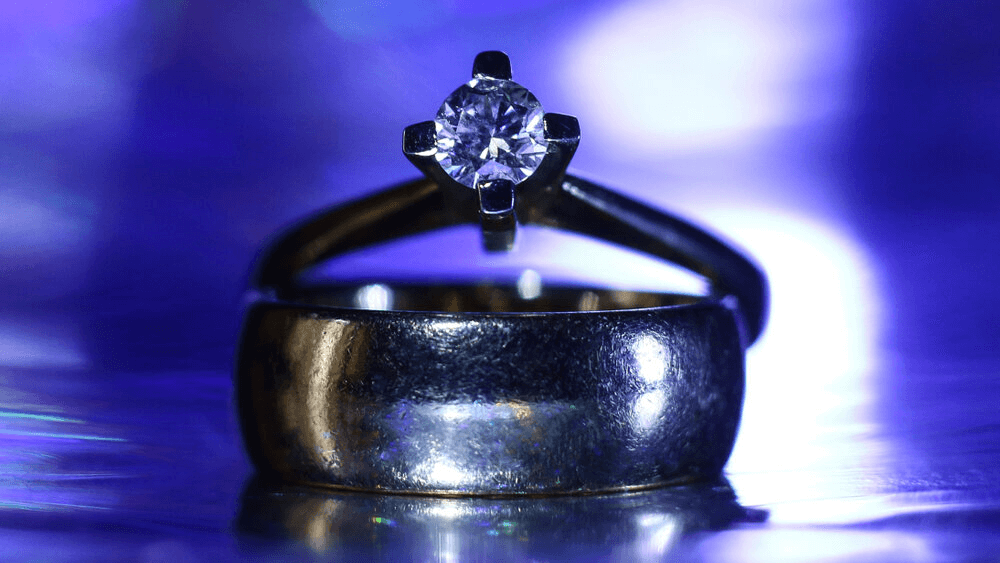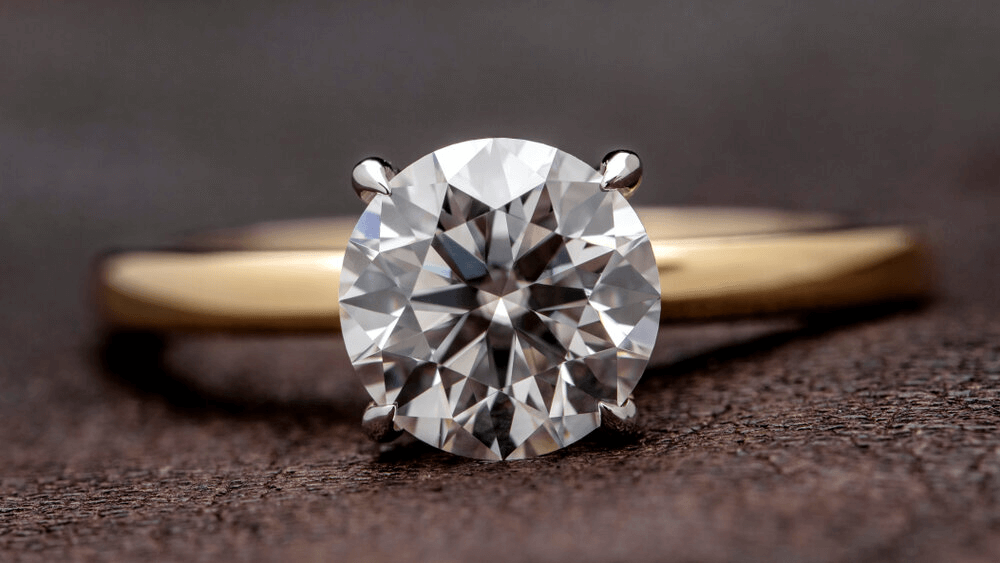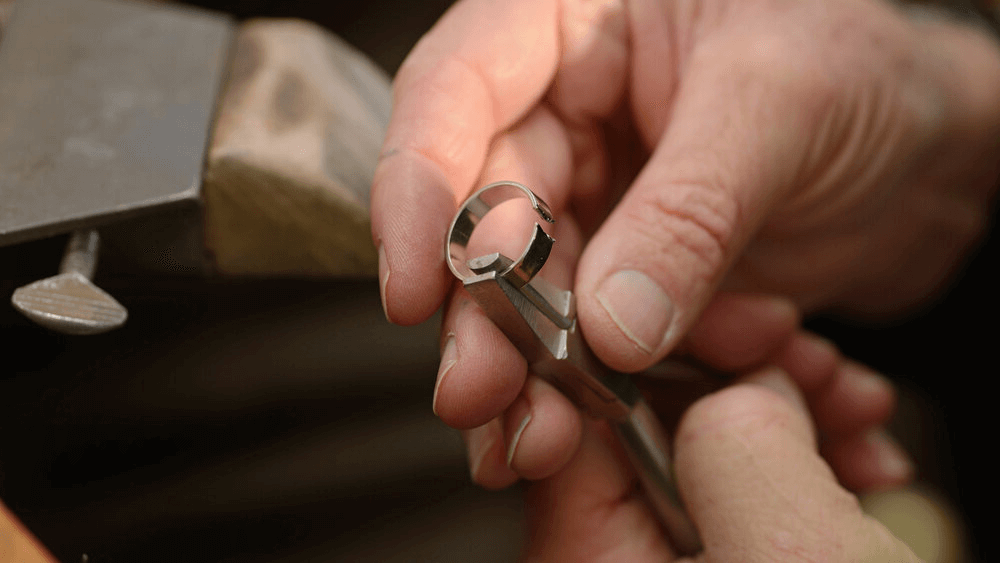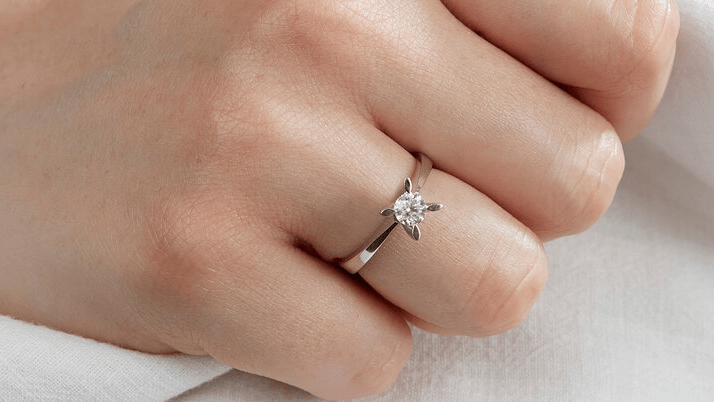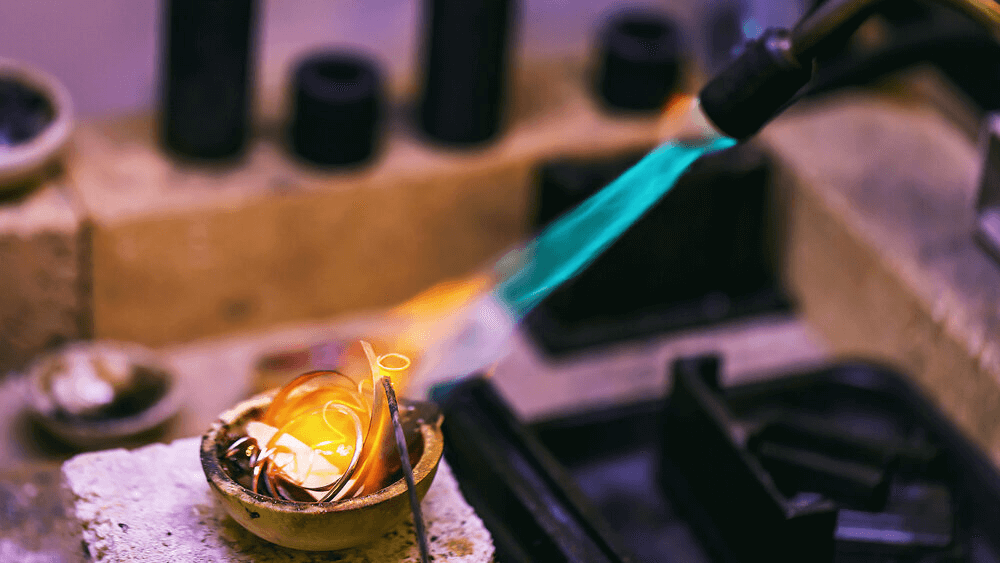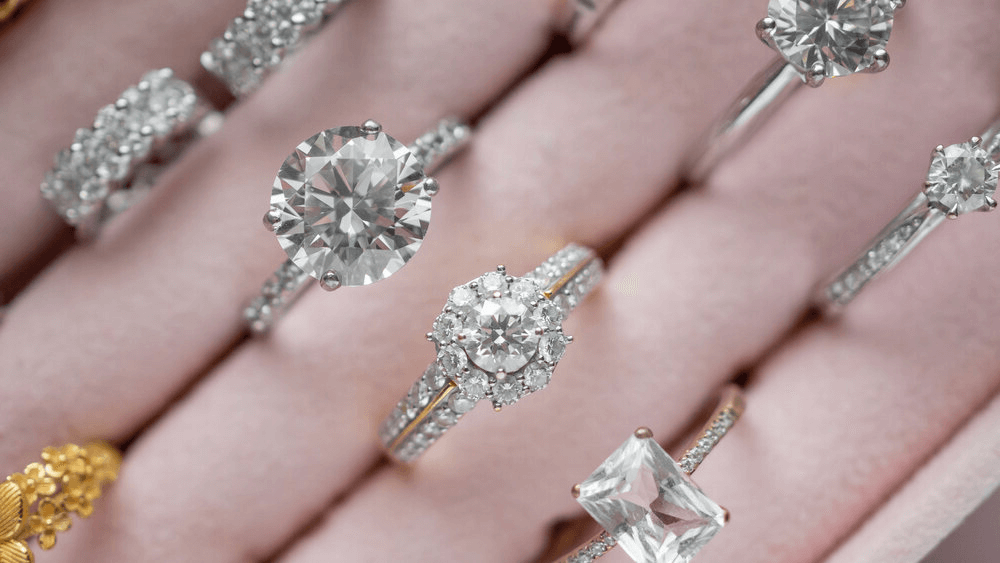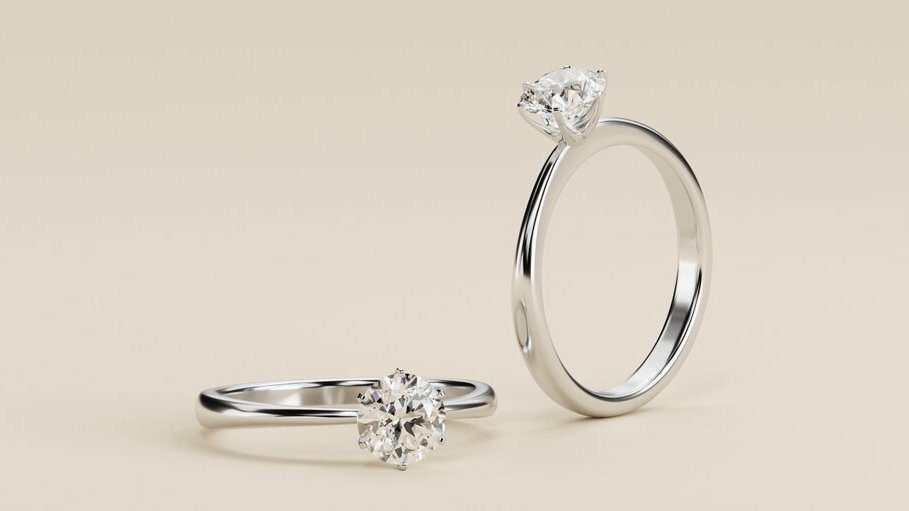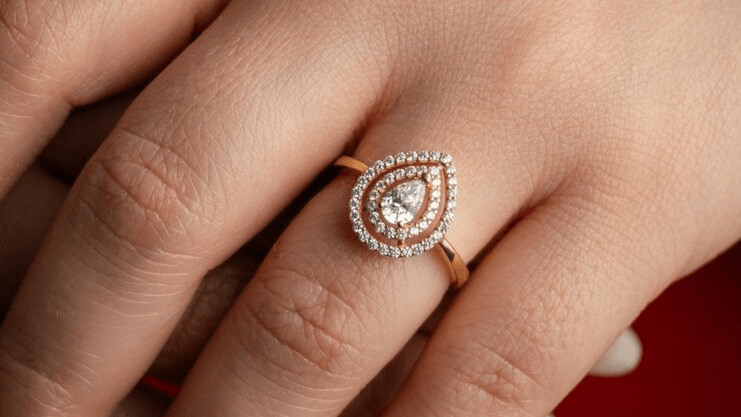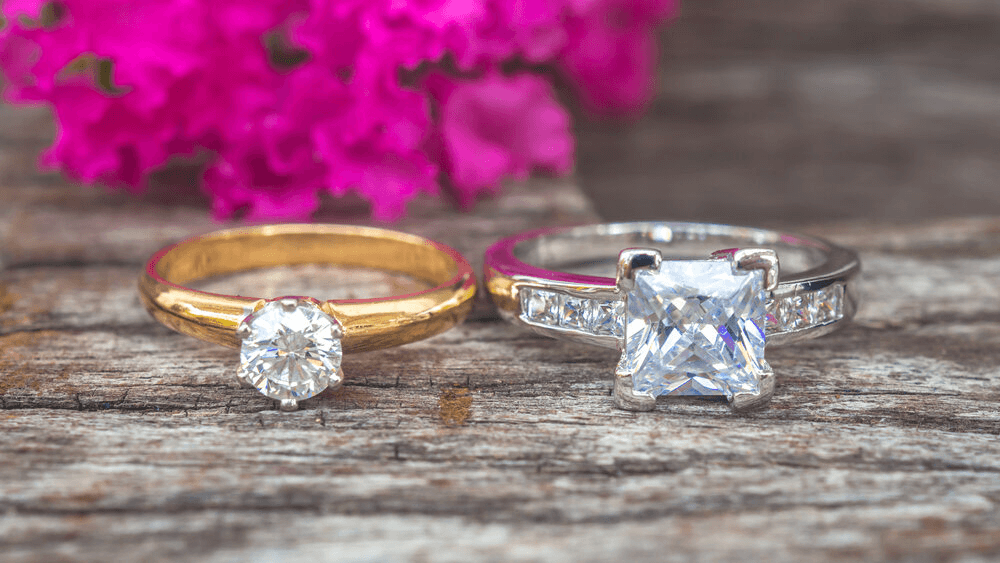The Secret Appeal of Rose Gold Diamond Rings Revealed

By Gary A.

Edited by Olivia H.
Published Aug 13, 2024
Edited on Mar 31, 2025
Rose gold engagement rings capture the perfect blend of modern elegance and timeless romance, making them the ultimate choice for today’s brides.

Navigate this guide:
- 6 Quick Tips for Choosing a Rose Gold Engagement Ring
- Introduction to Rose Gold Engagement Rings
- The Enchantment of Rose Gold: Composition and Color
- Evaluating Rose Gold Engagement Rings: Price and Value
- Gemstone Synergy: Perfect Matches for Rose Gold
- Care and Maintenance: Keeping Your Rose Gold Ring Radiant
- Durability and Longevity of Rose Gold Rings
- Selecting the Perfect Diamond for Your Rose Gold Setting
- Our Expert Take
- 8 Frequently Asked Questions about Rose Gold Engagement Rings
Before we dive deeper into the specifics of Rose Gold Engagement Rings, here are some practical tips to help guide your decision-making process.
6 Quick Tips for Choosing a Rose Gold Engagement Ring
Tip 1. Understand the Composition:
- Rose Gold Purity: Gold purity is measured in karats (K). 14K and 18K are the most common purities for engagement rings. The higher the karat, the more gold content. However, 14K rose gold might be more durable due to its higher copper content.
- Color Variation: The pinkish hue of rose gold comes from the copper alloy mixed with gold. More copper results in a redder hue, while less copper gives a pinkish tone.
Tip 2. Check for Allergies:
- Some people are allergic to the metals used in various gold alloys. If you or your partner has a known metal allergy, especially to copper, it’s essential to discuss this with the jeweler. They might recommend a specific karat or another metal entirely.
Tip 3. Consider Diamond Color:
- Diamond Color Interaction: Rose gold can reflect its color onto the diamond, especially if the diamond has a higher color grade (i.e., less color). If you’re considering a diamond with a noticeable color (like J or K), be aware that the rose gold might make it appear slightly pinkish.
- Best Diamond Shapes: Round, pear, heart, and oval diamonds are particularly well-suited for rose gold settings. However, be cautious with diamonds like emerald or Asscher cuts, as they might draw the rose gold’s color, affecting the diamond’s appearance.
Tip 4. Think About Durability:
- Rose gold is durable due to its copper content, making it resistant to scratches. However, like all jewelry, it can still get scratched over time, especially with daily wear. Consider the lifestyle of the wearer when choosing the ring’s design and setting.
Tip 5. Examine the Ring’s Hallmark:
- Authentic gold jewelry will have a hallmark indicating its purity. For rose gold, you might see “14K” or “18K” stamped on the inside of the ring. This stamp verifies the gold content.
Tip 6. Consider Future Resizing:
- Depending on the design and the alloy’s specific composition, resizing rose gold rings can be more challenging than other metals. Discuss potential resizing with your jeweler, especially if you think it might be necessary in the future.
Now that you’ve got these practical tips, use Jeweler AI below to find the perfect engagement ring that suits your style and budget:
Introduction to Rose Gold Engagement Rings
While the ultimate classic of the engagement ring world is undeniably (and forever) yellow gold, there’s room for more than one favorite in this arena.
Rose gold is a lot less common than a white-hued metal like platinum or white gold, and certainly a lot less popular than yellow gold, but the results of a well-designed rose gold diamond engagement ring speak for themselves. Beautiful, unique, ultra-feminine and incredibly romantic, rose gold is a winning option if you know your partner loves the metal and considers it a key part of their style…
The Rise of Rose Gold in Bridal Jewelry
Rose gold found its popularity early in the 1800s, particularly in Russia. You may have already heard of Fabergé Eggs – exquisitely detailed creations by Carl Faberge that showcased some of the most skilled artistry the world has ever seen. These creations blended together some of the most expensive and luxurious elements in the world including diamond, pearl, gold, and ruby.
It surprises a lot of shoppers to know that rose gold is as old as it is since its relative rarity means that it has a distinctly modern vibe to it these days.
But rose gold continued to gain in popularity, seeing particular interest from jewelry designers in the 1920s when that very glitzy, decadent style rose to the forefront. It has a rich, lavish feel to it that means it pairs perfectly with almost any design – particularly the art deco styles of the era, which are so architectural and structured that a touch of femininity often represents the ultimate compliment.
The Enchantment of Rose Gold: Composition and Color
Rose gold is, as the name suggests, gold in a very attractive pink hue. The exact shade can vary a lot depending on the concentration of alloying metals used, ranging from a light blush to a deep and rosy near-red.
For engagement rings, a lighter shade is often the ideal choice, since it captures that romantic vibe without overwhelming the design and making it difficult to pair with a range of outfits and vibes. Then again, nothing’s stopping you from embracing the very rosiest of rose golds.
What Makes Rose Gold Pink?
Gold used in fine jewelry is alloyed with other metals in order to strengthen it – and, in the cases of rose and white gold, change its color, too.
The type of alloying metals used will determine what color the metal turns. Copper is great for introducing that signature warmth into the gold that rose gold is famed for. To ‘dilute’ that warmth, silver is sometimes used as well. It all depends on what the gold is to be used for, and how high the karat type needs to be.
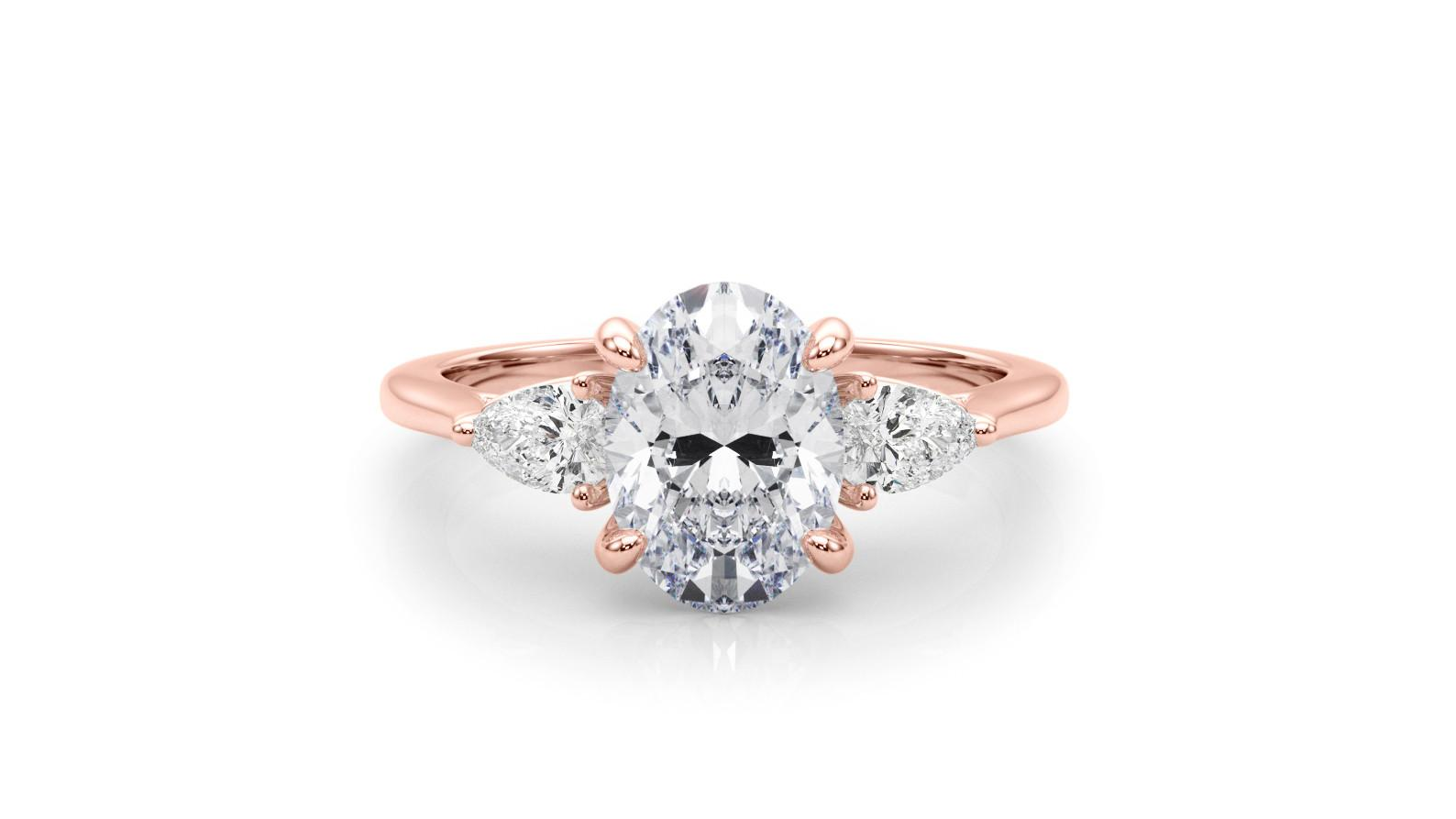
Evaluating Rose Gold Engagement Rings: Price and Value
Rose gold tends to be sold at lower karat types, since achieving that gold hue means introducing more alloying metals than you’d get in, say, 18K gold. Higher karat rose gold does exist, but it naturally features more of that original, yellow-ish tint.
How Price Is Determined
As always, the most significant factor behind value is gold content. This is true whether you’re shopping for yellow, white, or rose gold since gold holds a very high market value. Accordingly, gold with a higher karat type will be a lot more expensive – unless, of course, you’re shopping from a luxury brand that puts a huge markup on its products.
Rose gold also goes in and out of popularity, which makes it a little different to yellow gold, which is consistently popular. When it’s seeing a big surge of interest, it’s natural that the price will be a little higher.
Generally, a band of plain 14K rose gold will fall under the $300 mark, while 18K will be closer to $500. Of course, that’s for a plain band with no additional features. Engagement rings tend to be more complex and use more metal, so take that into consideration while you’re in the early planning stages.
Comparing Costs: Rose Gold vs. Other Metals
Since rose gold features the same amount of gold as yellow or white gold, the price is generally the same – although copper is marginally cheaper than other alloying metals, that can mean rose gold is the cheaper option since it uses more copper.
Platinum is the more expensive option – and it means you don’t get that rosy color. The only way to get a pink engagement ring (and still pick a hard-wearing metal) is to opt for rose gold.
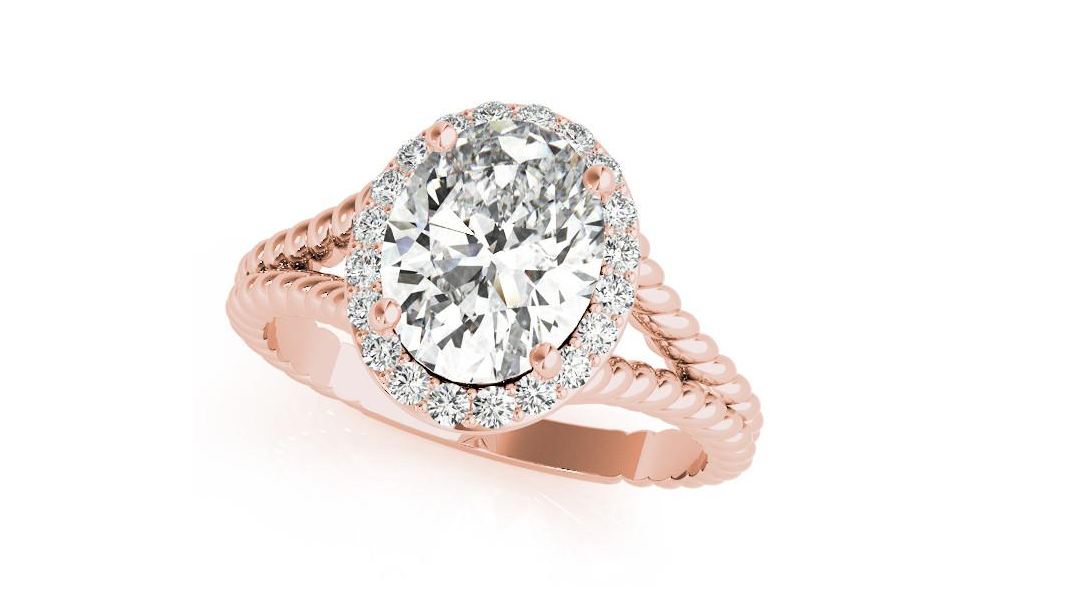
Gemstone Synergy: Perfect Matches for Rose Gold
Call us biased, but the ultimate compliment to rose gold is diamond. In particular, we love the look of a modified brilliant paired with rose gold, since there is many intricate facets reflecting shimmering glimpses of pink of the perfect accompany meant to the fire and brilliance that a modified brilliant creates.
Why not embrace the hyper-femme luxury of rose gold with a Princess cut diamond, or maybe a plush cushion cut? That way, you get maximum fire and a very contemporary vibe did any pink loving bride to be would be lucky to wear
Morganite and Pink Sapphires: A Harmonious Combination
While diamonds are the undisputed stars of the engagement ring world, colored gemstones can also be a beautiful choice, especially when paired with rose gold. Morganite, a variety of beryl with a mesmerizing pink hue, is a natural match for rose gold’s romantic tones.
The combination exudes a soft, feminine allure that is both modern and timeless. Similarly, pink sapphires, with their vibrant yet delicate coloring, create a stunning contrast against the warmth of rose gold. Whether set as the center stone or as accent gems, these pretty pink gemstones harmonize seamlessly with rose gold, resulting in a truly enchanting and unique engagement ring.
Other Gemstones That Shine in Rose Gold Settings
While pink gemstones undoubtedly steal the show when paired with rose gold, the alluring metal can also elevate the beauty of other precious stones. Rubies, with their deep, passionate red hues, take on a captivating warmth when set in rose gold, creating a luxurious and regal look. Alternatively, the cool tones of aquamarine or blue topaz can provide a refreshing contrast against the rosy tints of the metal, resulting in a sophisticated and unexpected combination.
For those seeking a more understated look, pearls or opals can also be a beautiful choice, with their iridescent luster complementing the soft glow of rose gold perfectly.
You might also consider a fancy color diamond, which offers the strength of diamond (not to mention the sparkle) in a rainbow of different colors. However, keep in mind that pink is among the rarest of the fancy colors for diamond, and it is highly coveted. The average shopper is very unlikely to get their hands on one.
Care and Maintenance: Keeping Your Rose Gold Ring Radiant
Rose gold is relatively low-maintenance. Unlike white gold, it doesn’t need to be re-dipped regularly to keep its color. However, there are a few things you’ll want to know…
Daily Care Tips
Rose gold is durable and easy to keep clean. Avoid wearing it for any strenuous activities, and try to remember to take it off before doing dishes, showering, or sleeping. Every few weeks, soak it in lukewarm water with a little mild dish soap, just to keep the dirt from building up in any nooks or crannies.
Professional Maintenance Advice
While you can invest in a sonic jewelry cleaning machine, a jeweler will be able to complete a more thorough clean on your behalf for a very reasonable price. Consider dropping by every 8-12 months for a tune-up, although rose gold doesn’t need any special care.
Durability and Longevity of Rose Gold Rings
Rose gold is just as durable as yellow gold in the same karat type. As you can imagine, this means that lower karat types are more durable. 14K rose gold will probably be your best bet if you lead an active lifestyle, although 18K is definitely still durable enough for an engagement ring.
How Copper Strengthens Rose Gold
Copper stops the natural gold content in your ring from being too soft and malleable for everyday wear. Without that copper (and the other alloys) it wouldn’t be long before your rose gold started to look scratched, warped, dented and marked.
Wear and Tear: What to Expect
That said, no gold is impervious to damage. Over the years, you might start to see the tell-tale signs of a ring that has been well-worn. This will be true no matter what metal you pick, and a lot of people really love those small signs of age, where, and tear. It’s a sign of a life well lived…and well-loved.
Another thing to consider with rose gold is the fact that, over time, the color does tend to darken. Copper has a habit of developing a slight patina, which is why antique copper items have that darker, more aged appearance to them. This is a harmless case of oxidation and doesn’t impact the durability of your ring. Instead, it’s another sign of how well loved the ring has been.
A quick polish from at the jewelry store can get rid of that patina, but a lot of people choose to keep it.
Selecting the Perfect Diamond for Your Rose Gold Setting
All the usual rules apply, and rose gold doesn’t demand anything too different of you when it comes to choosing a diamond. You’ll want to focus on cut quality which is, by far, the most important of the Four Cs.
Clarity is important, but focus on the VS and SI ranges, unless you’re going for a really big diamond. In any case, you’re aiming for eye clean diamonds – not flawless diamonds, since that would mean overpaying by thousands of dollars.
Color is also very important, but remember that rose gold will alter color perception. There’s no use in overpaying for a colorless diamond when it’ll have that pink reflection running through it. Look at the lower end of the Near Colorless range – i.e., I, J, and K.
Focus on good proportion and ratio in order to maximize sparkle – all the more important when you’re going for a luxury vibe with rose gold.
The Impact of Rose Gold on Diamond Color Perception
Step cuts like the emerald will show a lot more of that pink color than a brilliant or modified brilliant shape since the facets are a lot more open. That said, you will see traces of the rose gold reflecting through any diamond shape, just as you would with yellow gold.
The only way to avoid this impact on color perception is to go for a white gold or platinum band, although these colorless metals can emphasize any natural color within the diamond.
Most shoppers are happy to embrace the reflection of the metal through the stone if a colored metal is what they have their hearts set on.
Recommended Diamond Shapes for Rose Gold Settings
Any shape works with rose gold, but we love the look of the more modern shapes like the radiant and princess. Their spectacular, brilliant, fiery appearances are the ultimate complement to the hyper-femme look of rose gold, giving that decadent, princess-y vibe perfect for anyone who prefers to indulge in the finer things in life.
That said, a rose gold engagement ring doesn’t need to feel ostentatious. The sophisticated, understated look of an emerald cut is beautiful with rose gold, even in a setting as simple as a solitaire.
Speaking of solitaires, you can’t go wrong with the classics. A round brilliant solitaire – with, perhaps, a pavé band for a little extra luxury – is a real winner in anyone’s book, particularly in rose gold.
Our Expert Take
Gold is one of the most beautiful choices for an engagement ring. Despite that fact that it has a distinctly modern appearance, it’s got a lot of history behind it – and, accordingly, a lot of romance, too. You can’t deny the seductive vibes this pink-hued metal brings to an engagement ring or the fact that it brings a whole new dimension out of any diamond.
Remember that rose gold is a somewhat controversial choice. However, any metal is potentially controversial, given the fact that most of us have a decided preference for one or the other. Make sure your partner has expressed an interest in rose gold or has plenty of rose gold in her jewelry collection before you opt for this metal.
8 Frequently Asked Questions about Rose Gold Engagement Rings
- Q: What is Rose Gold?
- A: Rose gold is an alloy made from a combination of gold, copper, and sometimes a small amount of silver, giving it a distinctive pinkish hue. The copper content is what provides rose gold with its beautiful pink color.
- Q: Are Rose Gold Engagement Rings More Expensive?
- A: No, rose gold engagement rings are generally not more expensive than their yellow or white gold counterparts. The price of an engagement ring is more influenced by the diamond or gemstone it features and the complexity of the design.
- Q: Can Rose Gold Engagement Rings Tarnish?
- A: Rose gold does not tarnish but can develop a patina over time due to the copper content. Many find that this adds to the beauty of the ring, giving it a vintage look.
- Q: Is Rose Gold Suitable for Sensitive Skin?
- A: Rose gold is usually a good option for sensitive skin, but because it contains copper, individuals with copper allergies should be cautious. For those with sensitive skin, a higher karat of gold is recommended since it contains more gold and less alloy.
- Q: Does Rose Gold Enhance the Look of Diamonds?
- A: Rose gold can complement diamonds well, especially those with a slight color, as the pink hue of the metal can make them appear whiter. However, for colorless diamonds, consider that the pink color may reflect slightly on the stone.
- Q: What Diamond Shapes Work Best with Rose Gold?
- A: Round, pear, heart, and oval-shaped diamonds are especially flattering when set in rose gold, as they do not accentuate the color of the metal into the diamond as much as cuts like emerald or Asscher might.
- Q: Can Rose Gold Rings Be Resized?
- A: Yes, rose gold rings can be resized. However, the process might be slightly more complex due to the copper alloy. Always consult with a professional jeweler about the specific resizing needs for your ring.
- Q: How Do I Care for My Rose Gold Engagement Ring?
- A: Clean your rose gold ring by soaking it in warm soapy water and gently brushing it with a soft-bristle brush. Avoid using harsh chemicals. It’s recommended to store it separately to prevent scratches.
Discover Your Dream Ring with Jeweler AI – Find the Perfect Rose Gold Engagement Ring Today!
FOLLOW-UP GUIDE SERIES

